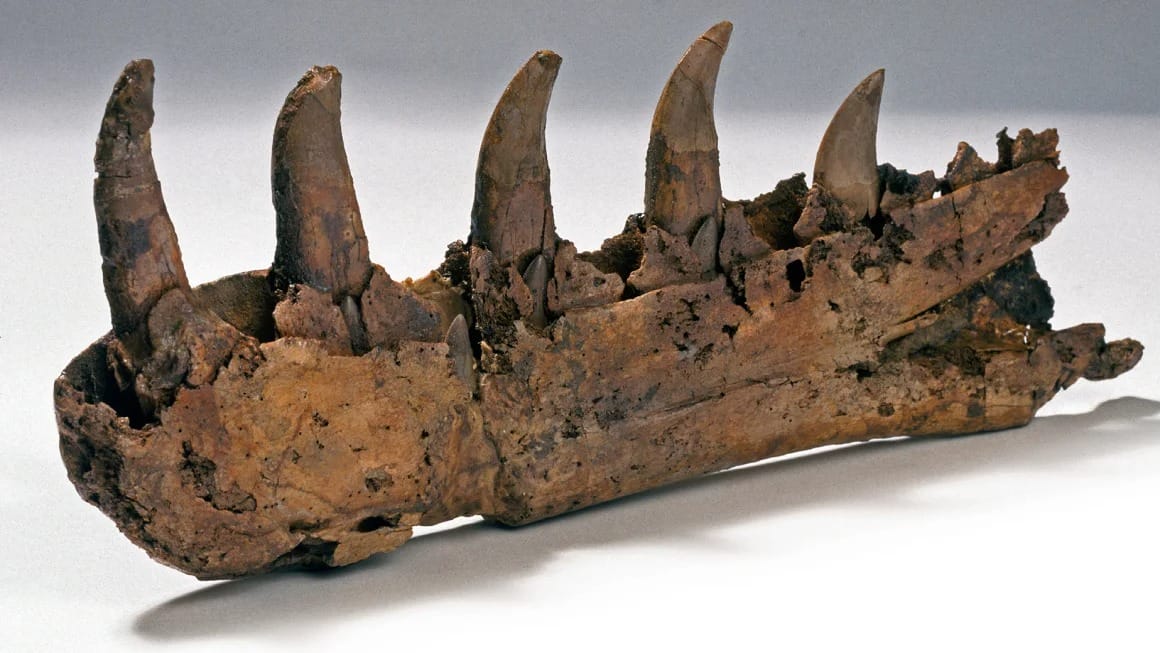Hailing from the slate quarries of England's Oxfordshire in the late 1600s, colossal fossilized bones initially baffled experts. In an era oblivious to concepts of evolution and extinction, speculations abounded, suggesting a connection to a Roman war elephant or a giant human.
200 Years of Dinosaur History.
 |
| Here is a depiction of a fossilized Megalosaurus jawbone, marking the initial scientific description and naming of the first dinosaur. |
Hailing from the slate quarries of England's Oxfordshire in the late 1600s, colossal fossilized bones initially baffled experts. In an era oblivious to concepts of evolution and extinction, speculations abounded, suggesting a connection to a Roman war elephant or a giant human. It wasn't until 1824 that William Buckland, Oxford University's inaugural geology professor, unveiled the first known dinosaur, Megalosaurus, based on jaw, vertebrae, and limb bones found in local quarries.
 |
| This statue in Bromley, London, UK, portrays Megalosaurus's early conception. |
Megalosaurus, or 'great lizard,' entered the scientific lexicon, describing a carnivorous creature exceeding 40 feet in length with amphibious tendencies. The word 'dinosaur' emerged 20 years later, coined by anatomist Richard Owen, founder of the Natural History Museum in London, based on shared characteristics identified in Megalosaurus and two other dinosaurs.
Beyond its immediate recognition, Megalosaurus played a pivotal role in popular culture. Charles Dickens envisioned a meeting with Megalosaurus in the muddy streets of London in his 1852 novel, "Bleak House." Displayed at London's Crystal Palace in 1854, Megalosaurus became one of the world's first dinosaur park exhibits.
As paleontologists celebrate the 200-year milestone, the field reflects on its evolution. Previously viewed as evolutionary failures, dinosaurs, thriving for 165 million years, far surpassed the existence of modern humans. With around 1,000 named dinosaur species and 50 new discoveries annually, paleontology experiences a golden age.
 |
| A scientifically accurate Megalosaurus. |
Technological advancements, including CT scanning and computational methods, provide unprecedented insights. Fossils from China in the 1990s revealed feathered dinosaurs, confirming their link to modern birds. The study of melanosomes in fossilized feathers now unveils the possible original colors.
Yet, mysteries persist. The origins of dinosaurs' size and their vocalizations remain unclear. The fragmented giant, Megalosaurus, stands testament to scientific inquiry, embodying the enduring allure of Earth's prehistoric past and the ceaseless expansion of knowledge within the fossil record.
